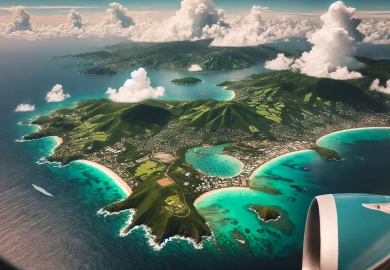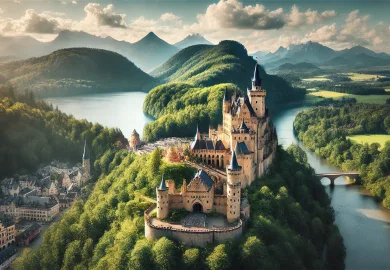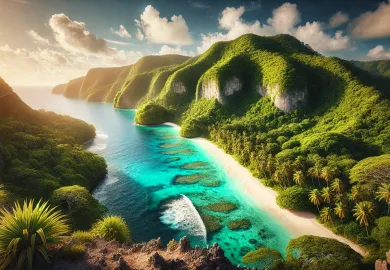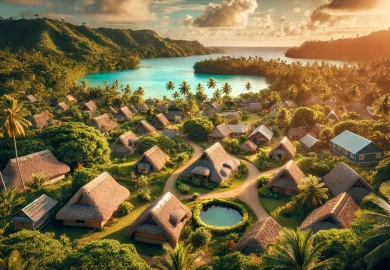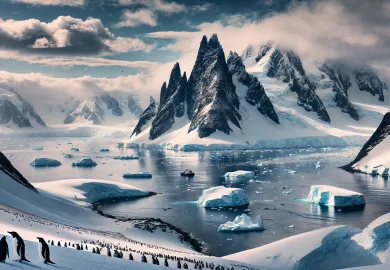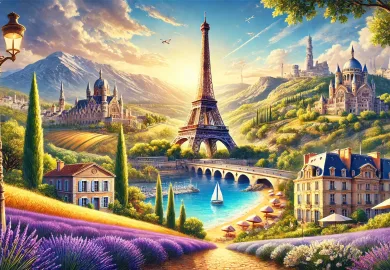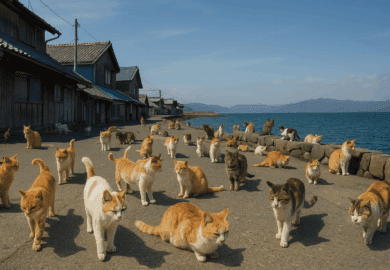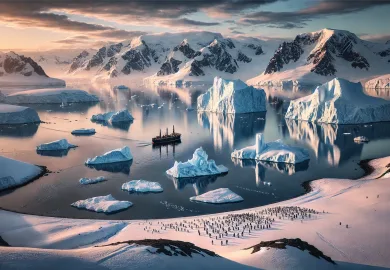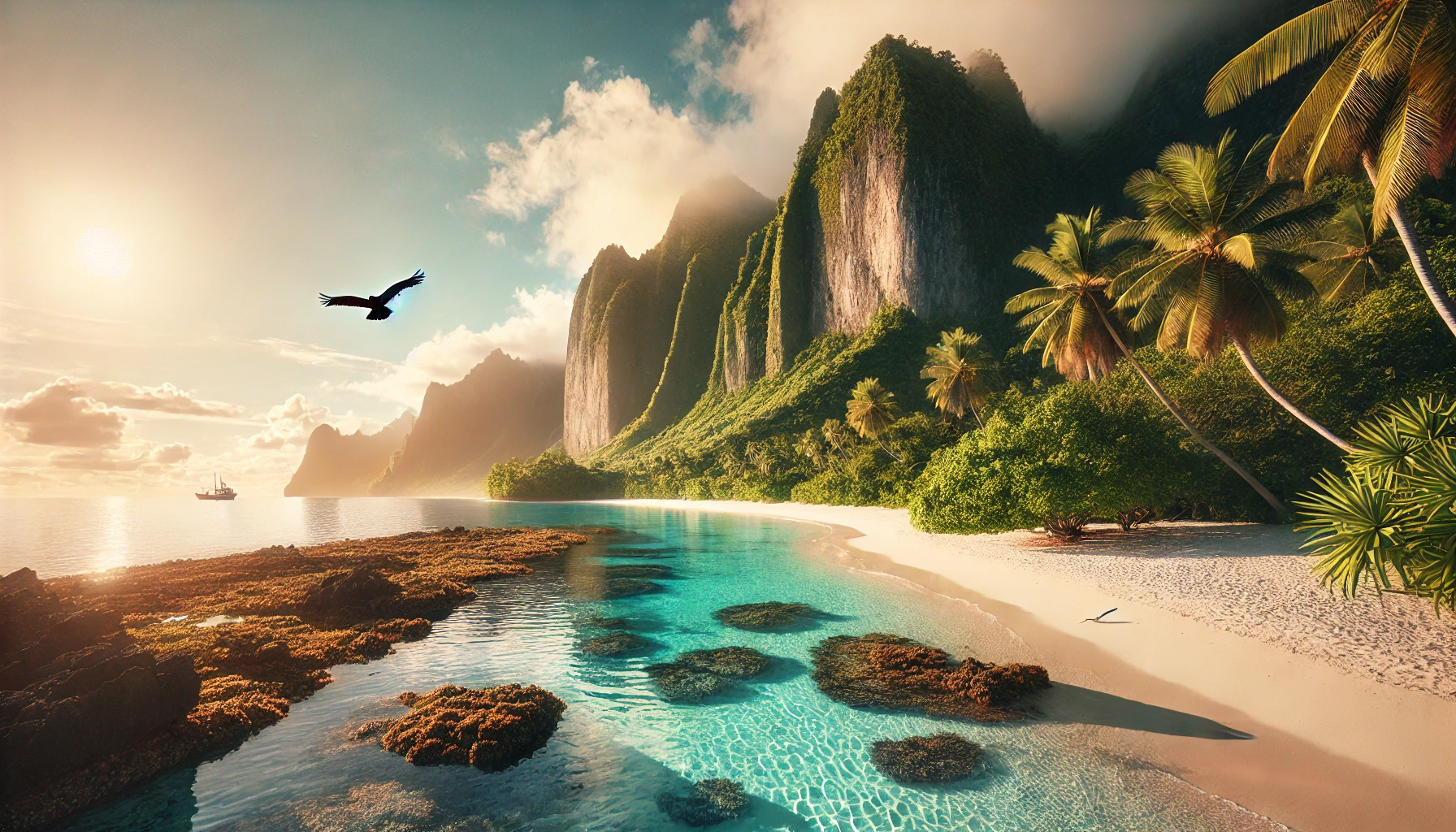
Christmas Island, a remote and mysterious island located in the Indian Ocean, offers travelers a unique blend of pristine natural beauty, exotic wildlife, and unseen travel destinations that remain untouched by the masses. Known for its lush rainforests, stunning coral reefs, and the world-famous red crab migration, this island promises an adventure like no other. But there’s more to traveling to Christmas Island than meets the eye. Let’s dive into the unseen places of this isolated paradise.
Exploring the Remote Beaches of Christmas Island
While most travelers come for the red crab migration or the underwater splendor, the secluded beaches on Christmas Island are some of its most hidden treasures. These stretches of sand remain untouched, offering you the chance to experience raw natural beauty without the crowds.
One such hidden spot is Dolly Beach, a serene, tropical oasis that feels miles away from the rest of the world. Here, soft white sand meets crystal-clear waters, creating the perfect setting for relaxation and solitude. Whether you’re swimming, sunbathing, or simply taking in the stunning views, Dolly Beach offers an experience of pure tranquility.
Further off the beaten path is Greta Beach, a wild and untouched coastline surrounded by lush rainforest. This beach offers a more rugged landscape, with dramatic waves and hidden tide pools. Snorkeling in Greta Beach allows you to witness some of the island’s most vibrant coral reefs, home to countless marine species that thrive in its protected waters.
The remoteness of these beaches ensures they remain pristine, making them the perfect destination for travelers looking to escape the hustle and bustle of modern life. Christmas Island’s beaches are not just about relaxation but also offer a chance to reconnect with nature in its purest form.
The Majestic Caves: Hidden Wonders Beneath the Surface
Christmas Island is home to an incredible network of underground caves, many of which are yet to be fully explored. These caves, shaped by ancient volcanic activity, offer a fascinating glimpse into the island’s geological history and are an adventurer’s dream.
The most well-known is the Grotto, an accessible yet awe-inspiring cave located near the coast. As you descend into the cave, you’re greeted by the soft glow of natural light filtering through the rocks, casting an ethereal beauty over the underground pools. The Grotto’s cool, refreshing waters offer the perfect respite from the tropical heat, allowing visitors to swim in the heart of a geological wonder.
For those with a sense of adventure, the Blowholes of Christmas Island offer a thrilling experience. These natural formations, created by centuries of erosion, spew water high into the air with each incoming wave. It’s a sight that showcases the raw power of nature and is sure to leave a lasting impression.
Beyond these popular spots, there are numerous lesser-known caves scattered across the island, each offering a unique adventure. Many of these caves are home to rare species of wildlife, such as the endangered Christmas Island shrew and certain species of bats, making them a haven for nature enthusiasts and spelunkers alike.
Encounter Rare Wildlife in the Island’s Rainforests
Christmas Island is often referred to as the Galápagos of the Indian Ocean, thanks to its unique ecosystems and diverse wildlife. While the red crab migration remains its most famous natural event, the island’s dense rainforests are teeming with life, offering countless opportunities to spot rare and endemic species.
One of the island’s lesser-known inhabitants is the Christmas Island Flying Fox, a critically endangered species that calls the island’s rainforests home. These large, fruit-eating bats are often seen at dusk, soaring above the canopy as they search for food. With conservation efforts in place, catching a glimpse of these incredible creatures is a rare and special experience for wildlife lovers.
The island is also home to the Christmas Island Frigatebird, a bird found only on this remote island. These magnificent birds, with their distinctive forked tails and striking red throats, can often be seen soaring gracefully above the island’s cliffs, especially during mating season when their displays are most vibrant.
But the real charm of Christmas Island’s wildlife lies in its hidden creatures. From the rare Abbott’s booby to the island’s elusive reptiles, wildlife enthusiasts will find themselves in awe of the biodiversity present within this small but significant ecosystem.
The Best Places to Experience Christmas Island’s Coral Reefs
Christmas Island isn’t just a hidden paradise above water; it’s also a diver’s dream below the surface. The island’s surrounding waters are home to some of the most pristine coral reefs in the world, teeming with marine life and offering incredible opportunities for snorkeling and diving.
One of the best spots to experience the island’s underwater wonders is Flying Fish Cove. This small bay is not only the island’s main harbor but also a snorkeling hotspot. Beneath the calm surface, you’ll find a vibrant underwater world filled with colorful corals, tropical fish, and even the occasional sea turtle. For those who want to dive deeper, several operators offer guided dives, where you can explore drop-offs that plunge hundreds of meters into the ocean’s depths.
Another less frequented spot is Ethel Beach, a secluded location that’s perfect for those looking to avoid the more popular diving sites. Here, the coral reefs are brimming with life, from majestic manta rays to a wide array of fish species. The clarity of the water makes it an ideal spot for both novice and experienced divers alike.
But perhaps the most intriguing diving site around Christmas Island is the Thundercliff Cave. This underwater cave system offers a unique challenge for experienced divers, allowing them to navigate through submerged tunnels and explore the incredible marine ecosystems that thrive in these sheltered environments.
Conclusion
Traveling to Christmas Island is a journey into the unknown, where untouched beaches, hidden caves, rare wildlife, and pristine coral reefs await. This small but incredibly diverse island offers a perfect escape for those seeking an adventure off the beaten path. Whether you’re exploring the remote beaches, venturing into majestic caves, or diving into its vibrant reefs, Christmas Island is a destination that promises to enchant and inspire. So, if you’re looking for an unseen paradise far away from the tourist crowds, look no further than the secluded wonders of Christmas Island.

